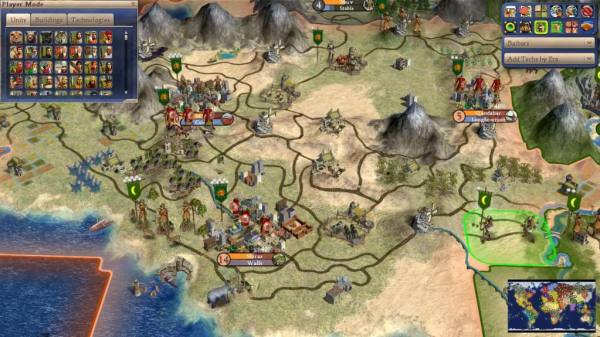The game is now, finally installed on all student computers. The issues I addressed in the previous post were quickly resolved by one of our students. We presented the problem to the class, and within hours a solution was on the table. This student was also extremely helpful in getting the game installed and working on all computers (Thank you Markus!).
By the beginning of class Wednesday, some students had played the game a significant amount, some had just barely stuck their toes in the water, while most had not yet opened their first game. In this first week of the program our main goal is to get our students comfortable with the basic game mechanics and user interface. Student´s will also be challenged by the fact that they will come across unfamiliar English vocabulary, and Social Science concepts, but at this point, this will be approached piecemeal as new situations occur.
Students are currently playing in pairs. Students take turns either playing the game, or filling in a log sheet where they make note of their progress. The purpose of the log is on the one hand to facilitate discussion in the pairs, and on the other hand to keep a record of decisions for a later reflection on their choices.
Civilization IV is quite a complex game. Both students who have played games extensively earlier, as well as novice gamers report that understanding the game functions and mechanics is quite difficult. This was not surprising, as we had similar experiences the last time we ran this project. Like last time, we largely rely on students to work this out on their own, and teach each other. Different from last time, is that we will be more vigilant in identifying and aiding students with significantly slower progression. Our largest failure the first time we ran this project was that we did not realize that a few students took a long time to grasp basic game mechanics. These had considerably worse learning outcomes than is acceptable. By giving special attention to this group from the outset, all students will have the necessary framework to reach their learning goals.
Although the level of confusion was high, so was student engagement. I was at times barraged with questions, related both to gameplay and the concepts that the game presents:
“Why would any civilization adopt slavery?”
“What´s a ´faux pas´/hereditary rule/caste system/ a settler?”
“Why did Montezuma just declare war on me?”
“Where should I build my first city?”
“Why should I build roads when I can build catapults and horse archers?”
“Why are my people unhappy?”
“Is this game addictive?”
“Why would anyone want to spend time on this?”
Though we made a conscious decision not to specify any learning goals in this first unit, that certainly does not mean students are not learning. Through their explorations of gameplay, discussions with classmates and their teachers, students are reflecting on a wide range of issues within sociology, international relations, language and geography. Some of these we will explicitly covered in later units, other learning outcomes will depend on the priorities and interests of the various students. We have some pretty awesome units planned out for the coming weeks, but what in my opinion makes this project truly great is the extent to which it facilitates both intended and “un-intended” learning outcomes.
Students posted their first texts on their personal blogs yesterday. Of these, Vegard and I selected 3 texts in English and 3 in Norwegian that were published on the class blog (English, Norwegian). Their task was as follows:
You have now had a bit of time to play this game. What are your expectations for using Civilization IV in class? Write a short text (Max. 400 words). To get you started you may want to consider these questions:
Do you have previous computer game experience?
Can games be a useful learning tool? Why? Why not?
Why do you think we have chosen to use computer games in our lessons.
The opinions so far are mixed. Some students who were initially skeptical to the project, are now more positive. Some who were initially positive, are put out by the complexity of the game, and are worried that time spent learning the game mechanics could be better spent elsewhere.
I encourage anyone who reads this blog to also have a read at what my students write about their experiences. I would be thrilled if you also took the time to comment on their texts. As I wrote about last year, an important aspect of this project is for students to get the chance to write texts that will be read by an authentic, interested audience.
Students will be writing at least 4 texts in the coming months. For each assignment, we will publish at least 6 texts on the project blogs. By the end of the project all students will have published one or more texts on the project blog. Vegard and I will try to keep up, updating the teacher blog as least as often as the students write, though we might be a bit more lax about our deadlines than we expect our students to be.
I truly look forward to getting into the nitty-gritty of this project, and I hope that with this blog we might inspire teachers elsewhere to give “classroom-gaming” a go.

